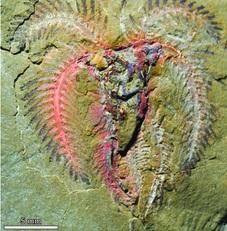Using AI to control energy for indoor agriculture
30 September 2024
Published online 23 May 2010

Fossil discoveries of soft-bodied creatures at the Burgess Shale, which is an outcrop of the Rocky Mountains in Canada, helped shed light on the biodiversity of the Cambrian period (542–488 million years ago). However, until now, few exceptionally preserved fossil remains from the Early Ordovician period (488–471 million years ago) had been found. Most of the fossils discovered were of shelly remains, which provide only an incomplete view of the actual fauna that existed at the time.
Scientists have recently unearthed >1,500 exceptionally preserved Ordovician soft-bodied fossils from the southeastern deserts of Morocco. This find gives the first close look at a period of time for which our knowledge was particularly incomplete due to the lack of an exceptional fossil record. Contrary to previous expectations, Burgess Shale-type faunas did not disappear at the end of the Middle Cambrian: they were probably still present tens of millions of years later than previously expected, but no fossils were found due to a lack of preservation.
The researchers have documented at least 50 different exceptionally preserved animals, spanning an area of 500 km2 in the desert, which represent an open marine system that existed hundreds of millions of years ago. Due to the co-occurrence of fossils typical of both Cambrian Burgess Shale-type faunas and Ordovician animals, the researchers suggest that this find calls for a reassessment of the communities that were present after the Cambrian period.
These findings show that the faunal turnover resulting from the 'Great Ordovician Biodiversification Event', which marks one of the most significant episodes in the history of marine life, was more gradual than hitherto considered. At the same time, the presence of several typical post-Cambrian taxa alongside the Burgess Shale-type organisms indicates that significant diversification started earlier than previously realized.
doi:10.1038/nmiddleeast.2010.152
Stay connected: